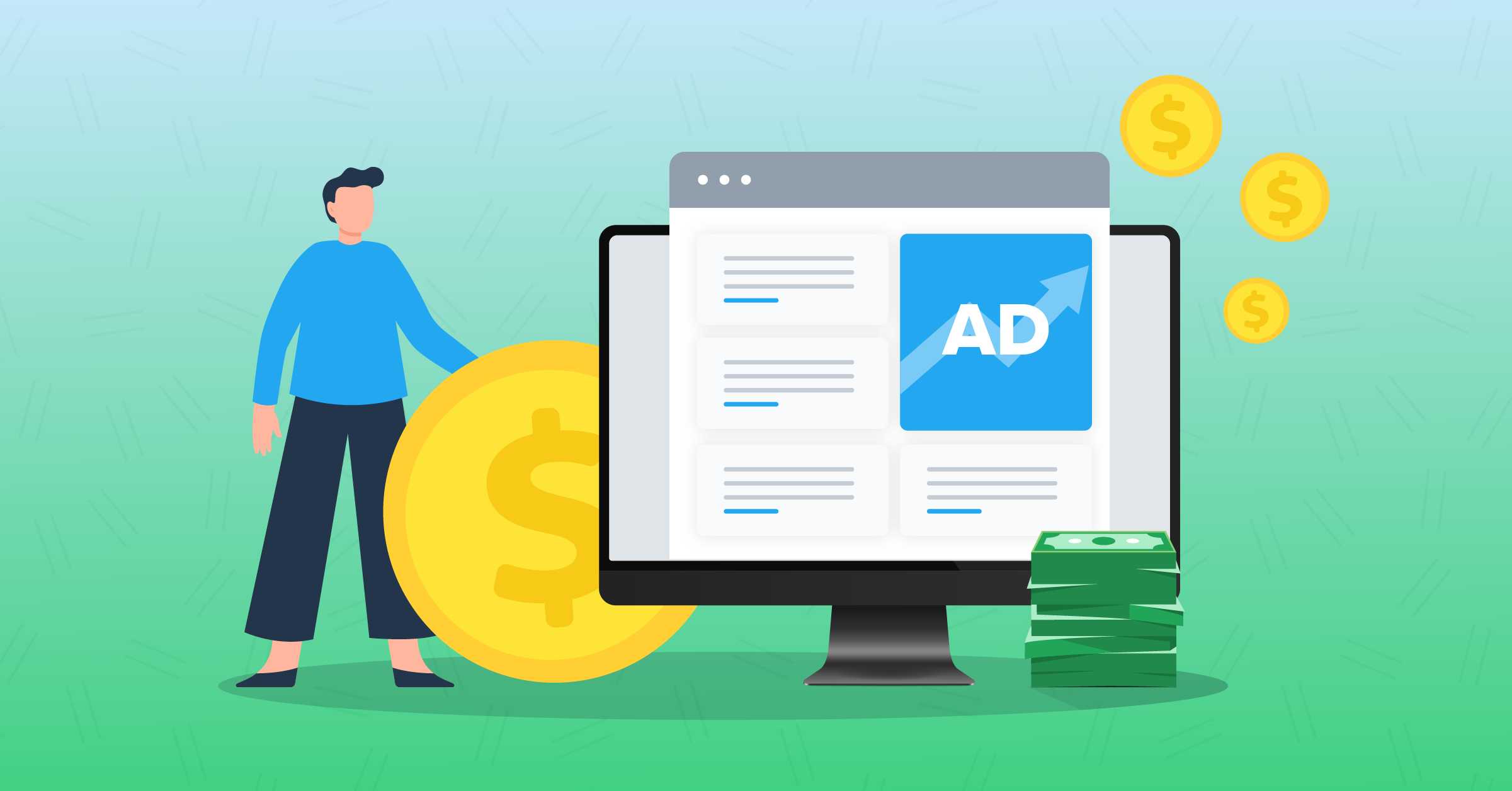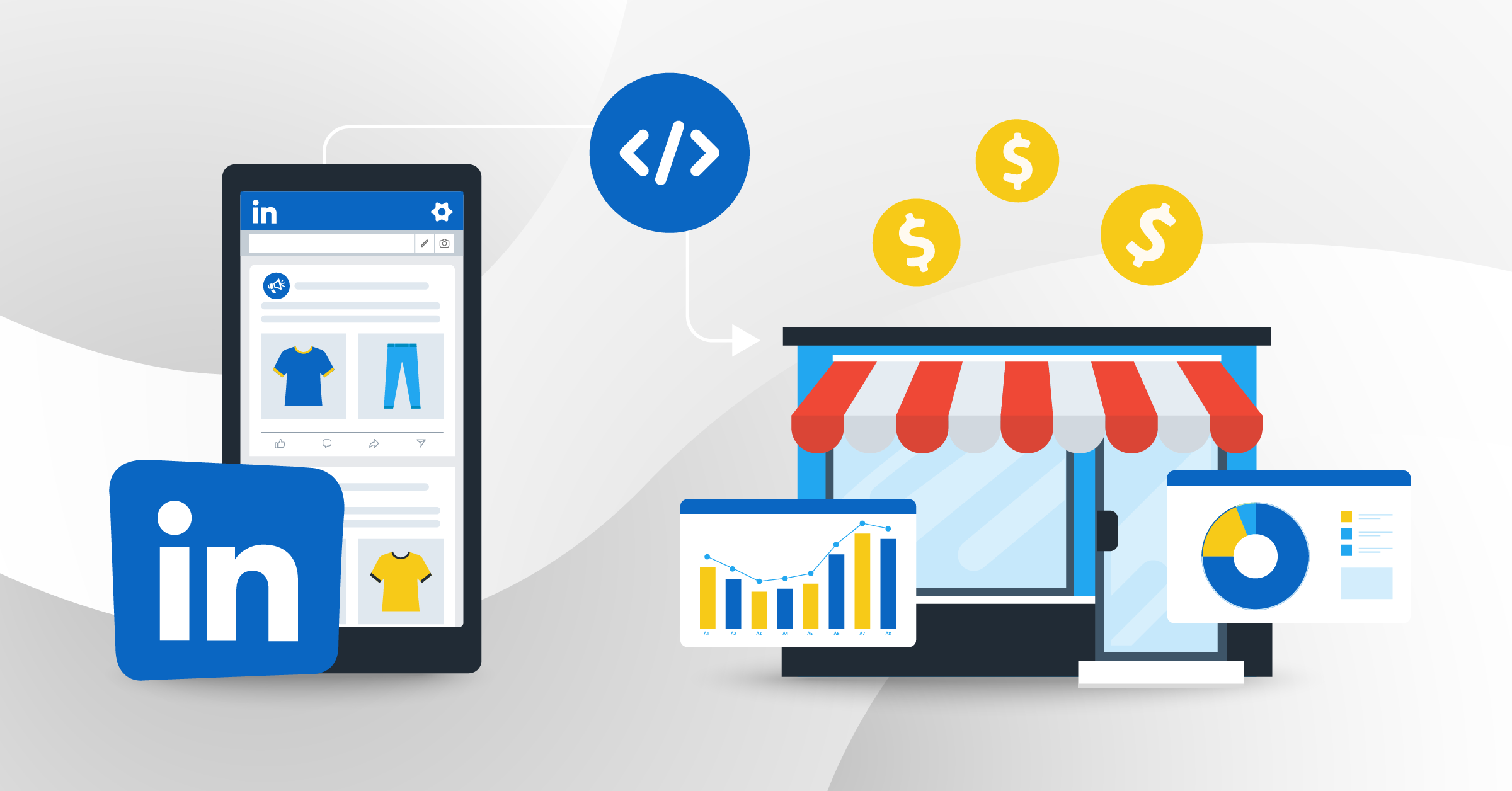
Digital advertising provides exposure for products and services. It is a great way for businesses to not only drive traffic through more clicks on adverts but to increase revenue. This is why worldwide digital ad spending is predicted to reach over $500 billion by next year.

Source: Statista
However, you need to know how effective your ads are in relation to your revenue. This is where ROAS comes in. ROAS, also known as Return On Ad Spend, is one of the most important metrics that reveal the effectiveness of digital advertising campaigns. It gives a bigger picture of actions that lead to conversions and revenue. Incorporating marketing automation into your workflows to avoid repetitive tasks or to connect different marketing platforms can help improve your ROAS.
ROAS Definition
Return on Ads Spend (ROAS), is the metric that shows the amount of revenue your business makes for each dollar it spends on digital advertising. Knowing the amount your advertising campaigns generate in relation to your ad spend helps to know what is working and what is not. It will also help to improve future advertising efforts.
Below is how to calculate ROAS for your business.
ROAS Formula
The ROAS formula is dividing the revenue you earned from your advertising campaign by the advertising spend.
ROAS = Revenue earned from ad / Ad spend
The result of the calculation will show you whether your advertising campaign is effective or not. Let’s take a look at an example.
A good example is a business named XYZ, which spends a total amount of $2,000 on its advertising campaign. The ads generated a sum of $10,000 at its expiration. The ROAS formula will be:
ROAS = Revenue earned from ad/ad spend
ROAS = 10,000/2,000 = $5,000 or 5:1
That is, for every $1 spent on advertising, it gets $5 in return.
This may look like the return on investment (ROI), but it is different from ROAS. Find out more below.
ROAS vs. ROI
ROAS as it is seen above means Return on Ads spend while ROI means Return on Investment. ROI is calculated by using the profit margin over the total cost of the capital. ROAS, on the other hand, is not about the profit, it simply looks at the total revenue generated by a specific ad campaign over the revenue earned from the ad. This means that you can have a negative ROI that can result in a positive ROAS.
It also implies that ROI looks at the big picture, i.e. the long-term plan rather than the short one. While ROAS is more specific, looking at specific ads campaign and their effectiveness.
Second, ROI focuses on profit rather than revenue. ROI shows whether your ad campaign is profitable or not. ROI also takes into cognizance other costs related to the online campaign, while ROAS only focuses on the direct ad spend. This implies that with ROAS, you can know whether your online campaigns are effective at generating conversions such as clicks, impressions, and revenue or not. While ROI will only tell you whether your online campaign is profitable or not for your business.
Let’s look at another example that reflects the difference between ROAS and ROI. A business spent $5,000 on digital ads and earns a revenue of $10,000. The business also spent some amount of money on software, personnel, and other logistics, amounting to $8,000. So to calculate the ROI,
ROI = Total cost / profit margin = 5,000 + 8,000 = 10,000 – 13,000 =
= -3,000/13,000 x 100 = -23.07%
ROAS = 10,000 / 5,000 x 100 = 200%
Here you can see that ROAS generated a positive figure which shows that the advertising campaign is effective, but ROI shows that the campaign is not profitable. This is why you need to pay attention to your advertising campaign’s ROI and ROAS so that you don’t end up generating losses for your business. Below is the importance of ROAS to businesses. Want to learn more about ROI? Read this post – Marketing ROI.
Why is Return On Ad Spend (ROAS) important?
Sure you are wondering whether ROAS is worth measuring considering other metrics you have to take into consideration. Using other metrics such as conversion rate is great, but it means leaving useful data about the campaigns behind. The goal of most advertising campaigns is geared towards traffic and clicks, and most importantly, generating revenue for the business. This is what you can measure using the ROAS.
The overall benefit of calculating the ROAS for your business is to let you know the amount of revenue your ad is producing for your business. This information will give you an insight into the type of ad campaigns that are successful and the less successful ones. This insight will further help you know if running ads for your business is worth it.
ROAS can act as a tool that you can use to control, analyze and optimize the effectiveness of your advertising metrics. It is more accurate than conversion rates. If your advertising campaigns are not effective, improve the ROAS by analyzing and comparing the success of your ad campaigns with one another. You can then optimize your ad spend and increase your profits.
When you combine ROAS with Customer Lifetime Value, you get insights across all your campaigns. This will help you know the budgets and marketing strategies to use in the future.
Factors to take into consideration when calculating ROAS
Ad spend is not the only thing you should take into consideration when calculating the ROAS of your campaign. There are other costs you should consider such as:
1. Partner/vendor-related costs
These are costs associated with the setting up of the campaign. This includes the salary of your advertising personnel, the fees, and the commissions paid to the agency to help set up the campaign.
2. Affiliate commission
This is the percentage of commissions paid to affiliates and network transaction fees.
If the above costs are not taken into consideration, the ROAS will not be accurate. This could lead to wasting your budget on ineffective campaigns.
What is a good ROAS?
There is nothing like a “good” ROAS. It all depends on your profit margins, expenses, and the totality of the business in question. However, the common ROAS gauge is 4:1 or higher. This shows that the advertising campaign is a success. It also implies that you can get $4 for every $1 dollar spent. However, when you have a low ROAS, it doesn’t mean your campaign is ineffective. For example, if your business is using banner ads, it will produce low click-through rates, and your ROAS will be lower. But banner ads can increase your brand awareness in the long run.
A good ROAS should be at least 3:1. This means that your revenue should be 3x your ad spend. At this stage, you are not losing money. But if your ROAS is less than 3:1 you need to change your strategy. Note that this is just an average ROAS, and it varies from one industry to another and for both Google ads and Facebook ads.
Google Ads ROAS
Google Ads is the advertising platform of Google. It is where marketers and businesses place bids on keywords to enable their ads to show up on different Google platforms such as the Google Search Results, Google Display Network, and Google’s AdSense program. Google Ads is the most popular PPC network among digital advertisers and it has the best returns on investment of $2 for every $1 spent.
The average ROAS for Google Ads is 200%, the same as getting $2 for every $1 spent. You can also determine the ROAS by looking at what an average company spends and earns on Google Ads. An average business spends $9000 to $10000 per month on Google and they earn $2 in revenue for every $1 spent. For businesses that use the Google Search Network, the amount is $8 for every $1 spent.
What is a good ROAS for Google Ads?
A good ROAS for Google Ads is a great idea, but going above it is better. Having a high ROAS means your business is making more from advertising campaigns. This can also mean you need to increase your ad spend, so you can get more results. Having said this, a good ROAS for Google Ads is around 400% or 4:1 return. The good thing is that it can be increased. So set your goals higher.
When calculating Google Ads ROAS, you need to consider all other advertising costs. This includes the costs of the bid management tools, landing page design services, and employee salaries.
Google Ads ROAS formula
ROAS in Google Ads is calculated by dividing the conversion value by the ad cost.
Google Ads ROAS = Conversion value /Ad cost
What is target ROAS in Google Ads?
As a modern digital marketer, you’re always looking for new ways to improve the performance of your advertising campaigns. One of the most effective methods for doing so is optimizing your Google Ads’ Target ROAS. So what is target ROAS in Google Ads?
Google Ads’ Target ROAS is a powerful tool that allows you to optimize your campaigns based on the value of each conversion, prioritize your ad spend on high-performing campaigns, and be more strategic in your bidding. By taking advantage of this feature and experimenting with different ROAS targets, you can better understand the performance of your campaigns and achieve your business objectives.
With Target ROAS, you simply set a specific ROAS value to aim for in your campaigns. Google Ads will then automatically adjust your bids to achieve that target ROAS, ensuring you get the most return on your advertising investment.
How to increase ROAS in Google Ads
1. Consistently audit your Google Ads account
The Google Ads platform is one of the most complicated online. It has different tools, channels, ad formats, and reports. You can’t afford to leave your ads account untouched. It is a recipe for wasteful spending. This is why you need a consistent audit of the account. Auditing a Google Ads account is very important in order to generate more Return On Ad Spend. It will reduce ad spend and time wastage.
Auditing your Google Ads account means doing a thorough inspection of your account and campaigns. It implies digging to find out how Google is spending your money and the results you are getting from it. From there, you can decide how to improve the overall health of your ad account.
Auditing not only helps to prevent the waste of money and time, but it can also lead to discovering new campaign ideas that will further increase your ad revenue.
Metrics you can track are impressions, clicks, CPC, and conversions.
Below are Google Ads auditing checklists:
- Review your company goals
- Review your Google Ads account structure
- Review your account and campaign settings
- Review your Ad groups
- Review your keywords and ad copy
- Review your landing pages
2. Use Google Remarketing
Google Remarketing is targeting your website visitors who did not take the required actions with relevant offers. Remarketing is a strategy that works for businesses, and this is why 68% of agencies and 49% of brands are allocating more budgets to it. There are two ways to target users with a remarketing campaign – a pixel or website and a remarketing list.
Website or pixel remarketing involves adding a piece of code provided by Google to your website to help capture users’ details. You can use this information to target them with the right ad as they move from one website to another online. As they click on the remarketing ads, it brings them back to your website.
The list remarketing is targeting your existing customers using their emails. You can upload this email directly to Google through LeadsBridge’s integrations for Google Customer Match. It helps to automatically upload emails to your campaigns to save time and effort.
Learn how to set up the pixel or website remarketing and list remarketing by reading this guide — Google Ads Remarketing tutorial.
Searching for inspiration? Discover some of the best retargeting ad examples here.
3. Reduce your ad spend
Return on Ad Spend (ROAS) consists of two metrics – ad cost and revenue. When you reduce the ad cost, obviously, the revenue will increase. To do this, you will need to work on some things. The first is negative keywords. A study revealed that using negative keywords in ads can waste up to 76% of the budget. So, don’t waste your resources on keywords that will not be profitable for your business.
Another way to reduce your ad spend is to improve your quality scores. Google uses this as a metric to determine the cost of your ad. Learn more about how it affects your ad cost in this post – Google Ads Cost. The quality score of your ad will either save you money or cost you more money. Do you know that a high-quality score can reduce the average cost per click of ads by up to 50% and a bad quality score can increase the cost per click by up to 400%?
The metrics for quality score are keyword relevance, click-through rate, landing page quality, ad text relevance, and historical Google ads account performance. You will want to increase your quality score by using relevant keywords in your Google Ads campaigns, refining your ad text, and optimizing your landing pages. All these will work together to reduce your ad spend and increase your ROAS.
Learn more ways to reduce your ad spend by checking out this complete guide – Online ads cost – everything you need to know for 2023.
4. Increase ads revenue
Revenue is an important metric in calculating your ROAS. This implies that if you improve the revenue generated from your Google Ads, you can increase your ROAS. So how does it work?
One way to increase your revenue is by optimizing your landing pages. If your ads receive lots of traffic without converting, then something is wrong with them. You can fix this by aligning your ads with your landing page. Ensure they use the same language on your ads and the landing page, and be sure to use a strong CTA for conversions. Learn more about Google Ads’ best practices.
Second, you can increase your ROAS by using automated bidding. With this feature, you can set a target ROAS. According to Google “Target ROAS automatically sets bids to help get as much conversion value as possible at the target Return On Ad Spend (ROAS) you set.”
5. Optimize your lead generation efforts
You can run lead generation campaigns with Google ads lead form extensions in order to only target the highest-quality leads with the best chances of converting to customers. Check out our comprehensive guide to Google lead generation.
However, generating leads is only half the battle. By implementing a successful lead nurturing/follow-up process you can ensure efficiency and maximize marketing spend with every lead generation campaign. That’s where LeadsBridge steps in.
LeadsBridge allows you to fully automate the follow-up process with key integrations for Google ads lead form extensions which allow you to sync new leads in real time with your specific CRM or marketing platform.
Facebook Ads ROAS
Facebook has one of the best ad platforms online. Facebook and its ads account for 80.4% of U.S. social referral share to eCommerce and retail sites. This implies that for every four customers, one click on the ad. This is why 3 million businesses use Facebook to run social media ads.
It will also interest you to know that there are over 7m active advertisers on Facebook. This is because of the potential for brands to reach approximately 2.14 billion users on Facebook with the ad system.
What is ROAS in Facebook Ads?
ROAS in Facebook ads is the revenue generated from your ads divided by ad spend. The formula is :
ROAS = Facebook ad revenue / Facebook ad spend
What is a good ROAS for Facebook ads?
A good ROAS for Facebook is the same for general online marketing which is 4:1. That means for every $1 dollar spent, you get $4 in sales. However, with proper ad setup and strategies, you can get above $4.
What is the average ROAS for Facebook Ads?
A survey carried out by Databox to know the average Return On Ad Spend revealed that the majority of responders say 4 – 5x is their average spend. Only about 5% say that their average ROAS is greater than 80x.

ROAS goal Facebook Ads
Facebook Ads’ Goal ROAS bid strategy offers you more control over your campaign’s return on ad spend. By setting your desired ROAS value, Facebook’s algorithm will dynamically bid to maximize your results while keeping your return on ad spend around an average amount over the course of your campaign.
Setting a ROAS goal helps you keep your return on ad spend around an average amount over the course of your campaign. It also gives you more control over the purchase value you generate from your ads than what is possible with the highest-value bid strategy.
It’s important to keep in mind that if your ROAS goal value is set too high for Facebook to meet, delivery may sometimes stop, and your budget may not be spent in full. Also, while Facebook’s algorithm aims to stay around the ROAS goal control you specify, it’s not guaranteed.
How to increase Facebook ROAS
Make the most out of your lead generation with automation
You can run lead generation campaigns with Facebook Lead Ads in order to target a massive, high-converting audience. By incorporating LeadsBridge integrations into your Facebook Lead Ads approach, you can sync new leads in real time with your selected CRM or marketing platform and contact your new leads immediately.
1. Facebook Lookalike Audiences
Facebook Lookalike Audiences is a tool you can use to target users that have similar traits to your existing customers and followers. For instance, if you set up an ad campaign on Facebook and 100 people click on the ad and made purchases, you could group these people into an audience and then ask Facebook to find similar people and target them with ads. This makes your ads really profitable because targeting the right people is a recipe for success in an ads campaign. Your source audience can be people from your website (through the Facebook pixel), Mobile app users, Facebook page audience, and CRM segments (emails).
This will save you time and effort. To learn more about Facebook Lookalike Audiences, read this guide – How to Use Facebook Lookalike Audiences.
2. Retargeting
Retargeting is a strategy for targeting website visitors, subscribers on your email list, etc. Targeting cold audiences does not generate as many results as retargeting. The truth is, 2% of consumers who visit your website for the first time convert. Retargeting will help you attract the remaining 98% and on average, retargeting ads are 76% more likely to be clicked on than a regular old display ad.
Retargeting is great for bringing back potential customers to your website. It works by installing a Facebook pixel on your website. The pixel collects visitor/users’ information on your website and sends it back to Facebook. This helps Facebook to tell you what pages people are viewing and the actions they take on your website. The information is useful for creating a Custom Audience from your website visitors and retargeting them with special offers. This will help to increase your ROAS greatly.
Automize your strategy with the help of LeadsBridge and accomplish more in less time.
3. Use Facebook Dynamic Ads
Facebook Dynamic Ads are ads that change to show content and promotions to users who have shown interest in a product or service. Dynamic Ads will help you to retarget visitors who have been to your website but did not take any action. You can create targeted ads for them showing the products, blog posts, or reviews they viewed on your website and other similar products.
Find an example of a Facebook Dynamic products ad from Eton shirts below.

With Dynamic Ads, you can target users on different devices such as desktop and mobile devices on Facebook, Instagram, Messenger, and the Audience network. It is also great for driving social traffic to your product pages on your website. These help you to increase your ROAS significantly. For a complete guide on how Facebook Dynamic Ads works and how to set it up, check out this blog post – Facebook Dynamic Ads: the complete guide.
4. Use landing pages that convert
Landing pages are important for conversion. A good landing page should have an average conversion rate of 2.35%. However, many businesses are seeing rates of about 5% – 11%. This means a well-designed landing page can really increase your ROAS. However, a highly converting landing page should have the following elements:
- An attractive, concise, and clear headline that shows your value proposition
- A brief and captivating subhead
- The benefits of your offerings
- A single call to action
- Strong visuals such as hero shots and videos
For complete guides on how to create landing pages that convert – check out these blog posts – A step-by-step guide to increase your landing page conversion rate and the Anatomy of a Landing page that converts over 60% of traffic.
TikTok Ads ROAS
While TikTok is still relatively new to the advertising game, it has quickly become one of the most fruitful social media platforms in the world. The average ROAS is currently sandwiched between that of Google and Facebook, and because TikTok’s platform is more similar to Facebook, the desired ROAS metric will reflect that.
250% or 2.5:1 is a solid ROAS on TikTok. So, for every advertising dollar spent on TikTok, you should expect to see $2.50 in return.
How to calculate break-even ROAS
Sometimes calculating ROAS doesn’t always show the cost-effectiveness of ad campaigns. This is because it does not show whether or not you are earning a profit. Your business can have a high ROAS, but the result of the calculation can show that the advertising campaign is not profitable. This is why you need to calculate the break-even ROAS. You need to know your profit margin to calculate the break-even ROAS for your ad campaigns. Let’s look at an example below.
For example, if your profit margin is 20%, the break-even ROAS will be:
Break-even ROAS = 1/profit margin x 100%
Break-even ROAS = 1/20% = 500%
This implies that your business needs to get $5 for every $1 spent on ads to be profitable. Otherwise, you will keep losing money. As you know this calculation doesn’t consider other costs of running your business, it only considers the cost of ads and returns on ad spend.
The challenges of ROAS for businesses
Most companies experience some level of challenges in measuring ROAS, especially in two major areas. They are – marketing attribution and Customer Lifetime Value (CLTV).
Marketing attribution
The first challenge in measuring ROAS is that you may not know the total number of users that translates into customers because of your ad campaign. Of course, you can know the number of people that click on the ad and make purchases, but what about the users that did not make purchases right away? Maybe, such users return to your website some days later to buy as a result of retargeting. So, how do you account for that in your ROAS calculation?
This is where marketing attribution comes in. Marketing attribution is knowing how much credit your initial ad gets for a customer. With ROAS, you need to choose an attribution model you can use across your marketing channels and campaigns.
Customer Lifetime Value (CLTV)
The second challenge with ROAS is calculating the revenue generated by an ad campaign, especially if the customer keeps buying repeatedly. For example, a customer clicks on your ad and buys a product for $200. The same customer comes back again another time (probably monthly) to make a purchase. The Customer Lifetime Value of the customer over a year is $2,400, rather than the initial transaction of $200. But ROAS is only calculated on the initial purchase. This is because it is difficult to know if the customer will buy in the future and how much they will buy.
This is where you need to estimate the CLTV for the customers that are coming in from your ad campaign. Customer Lifetime Value is the value of your customer over a period of your business relationship with them. Look into the historical data and see how much on average has been purchased by users who click on your ads.
Here is a detailed post about Customer Lifetime Value – 5 Creative ways to use Customer Lifetime Value Custom Audiences to boost your Facebook Ads.
Conclusion
ROAS (Return On Ad Spend), is one important metric you would want to track for your business. Calculating ROAS for your business will help you know the amount of revenue your ad is producing for your business in relation to your ad budget. The result will show if your ads are profitable or not.
ROAS is also useful for controlling, analyzing, and optimizing the effectiveness of your advertising metrics. In total, always aim to get at least a ROAS rate of 4:1. This means for every $1 spent, aim to get $4 in return.

























